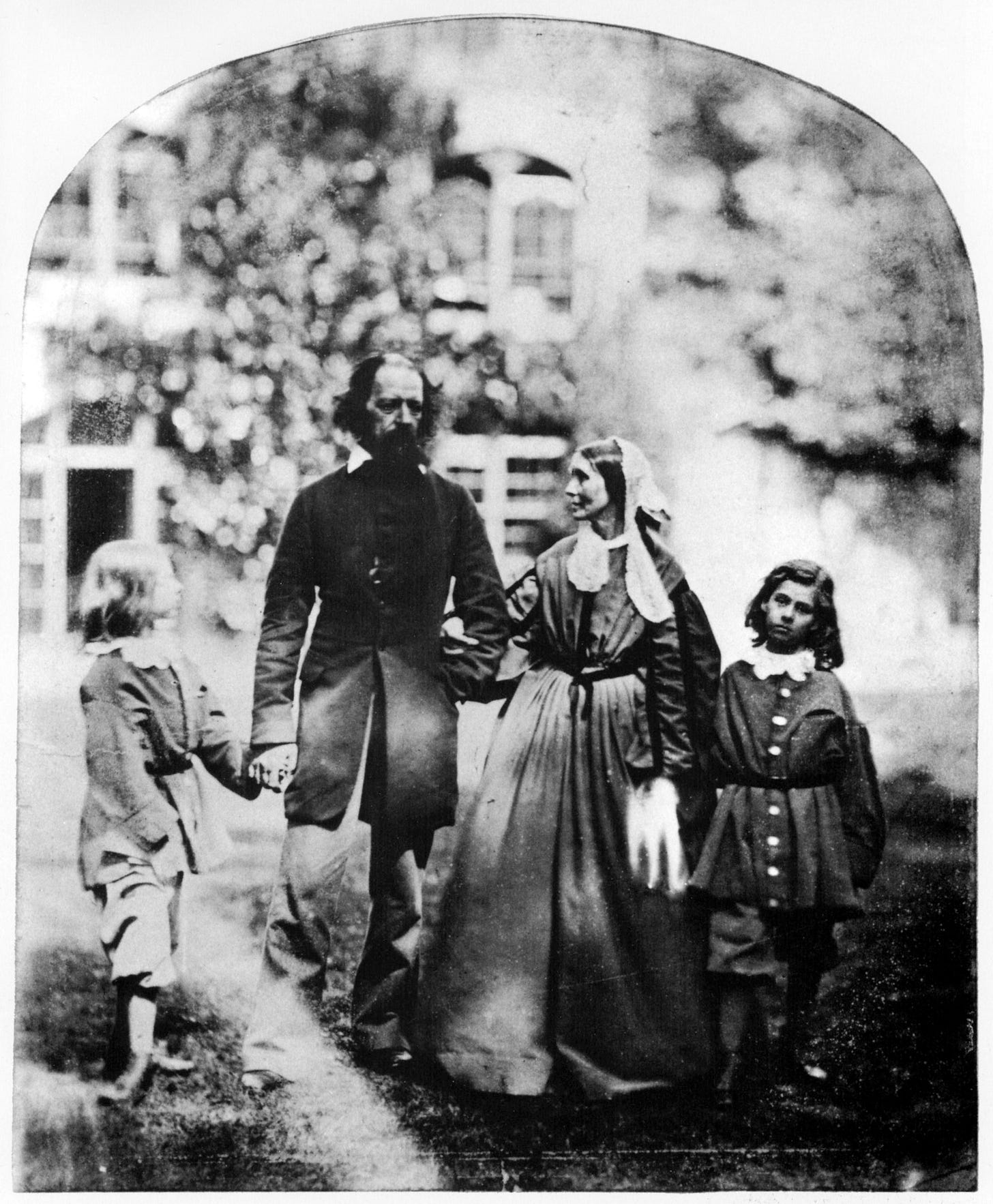Light: man's newly captured slave
A poem: "On a photograph of Alfred Tennyson", by Eliza Ogilvy, 12th January 1863. But which photograph? And which photographer? Who dashed thy semblance on the glass?
This poem is one of 35 rediscovered earlier this year, written out in a ruled foolscap notebook with marbled covers: one of Eliza’s commonplace books. Most are dated, in a range from 1856 to 1881, and the subject matter is broad. In this case, in a poem dated January 1863, Eliza plays with new ways of describing the nature and process of photographic portraiture, in what seems to be an affectionate parody of Tennyson, with its ‘Saint-mists’ and ‘Sun-ray’ and iambic 4/4 meter (she had been accused at least once of emulating his style, to her amusement).1 Eliza must or may have known Tennyson personally, through Lushington, Browning or Bicknell connections — the latter on the Isle of Wight, in Bonchurch, not far from Tennyson’s home. What we don’t know is who ‘dashed thy semblance on the glass’. Both James Mudd and William Jeffrey photographed Tennyson in 1861 or ‘62, Rejlander in 1862 and ‘63. The date is too early for Juliet Margaret Cameron, although the poem is full of arcadian references that suggest she might have been the maker of the image.
On a photograph of Alfred Tennyson
O Bard whose notes are sweet as drops
From meadow clover sucked by bees
From thyme half up the mountain tops
Or pansies nestled under trees
This sweetness of thy numbers clave
To Him Man’s newly captured slave
The Sun-Ray, forced in field and town
To pourtray poet, peer and clown
Thy music, quivering in his vein
He dashed thy semblance on the glass
Just such a piping shepherd train -
On crisp clear Christmas mornings pass
Down Roman colonnades to play
By Mary’s shrine, while one thin ray
Of votive lamp, lights up the saint
and minstrels uttering tuneful plaint
Yet can I fairly liken one
So saturate with men and books
Who tracks the ages as they run
To them who pipe by craggy brooks
Or tend their sheep along the vale
And only know the village tale
And scarce think up to God on high
So many Saint-mists veil their Sky
Thy wisdom, their simplicity
Seem dashed to me with kindred tint
As rich elaborate symphony
In fullest orchestra gives hint
Of some old ballad on the lips
of milkmaid as her hoop she slips
Over her arm and leads her cows
Home, loitering ‘mong the broomy knowes
Nor hardly in my flowers[?] press
For as in Science so in Art
The Greater still includes the Less
The Mighty Whole contains the part
Not Continents alone the Main
But small isles in his arms doth strain
So must thou Poet, in thy Guise
The Pan Pipes, and the Delian Lyre?
Eliza Ogilvy, 12th January 1863
Thanks to Tim Wales for transcription of Eliza’s handwritten manuscript

©️ William Owen 2024
Eliza wrote ‘The onset of the 600, imitated from Tennyson’, dated January 3rd 1859, an unpublished poem that flings out some ire at the judges (and entrants) to the Burns Centenary poem competition at the Crystal Palace - something to be followed up when the less readable parts of the manuscript are transcribed.


